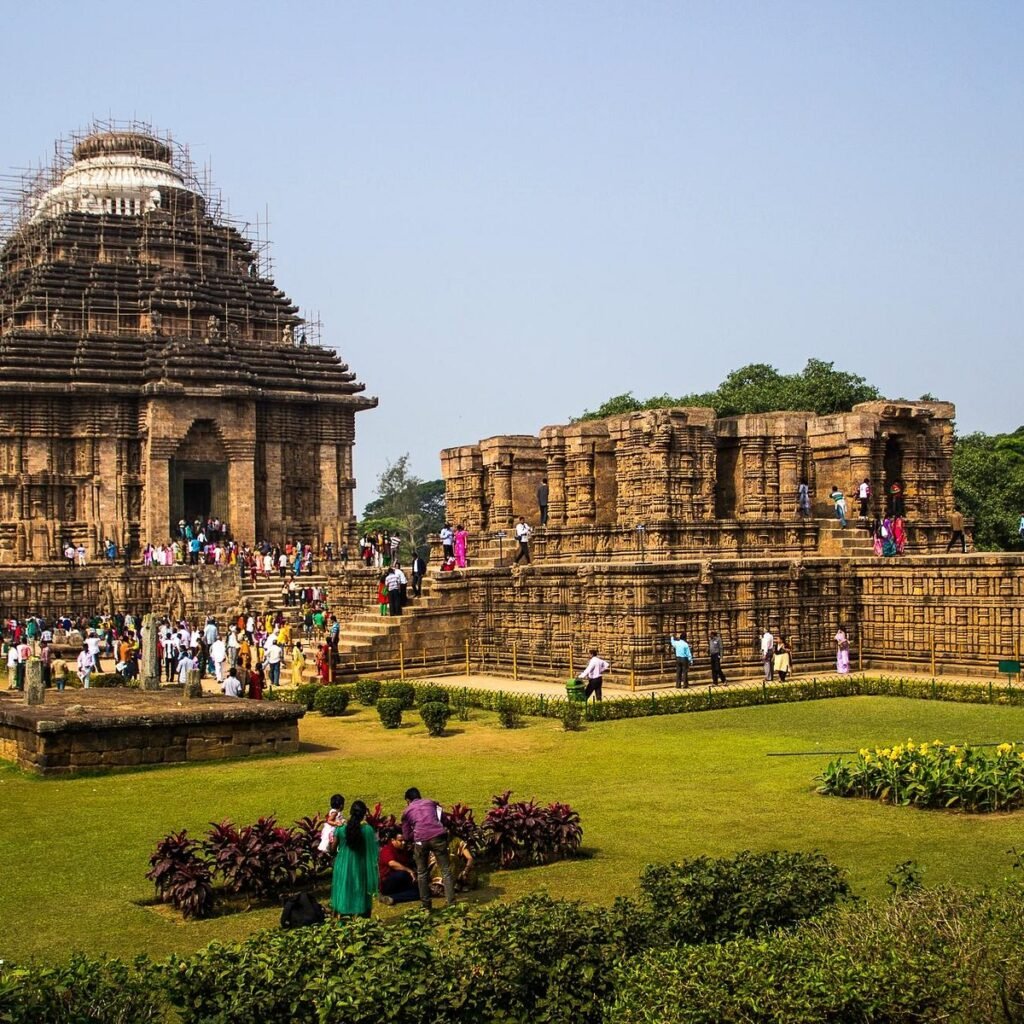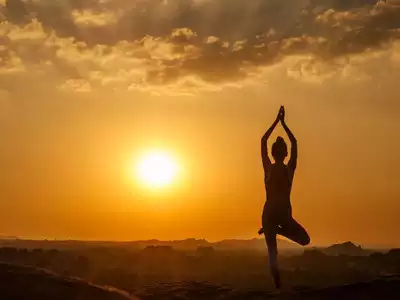
Background of Konark Sun Temple ( history )
The Konark Sun Temple, an architectural marvel nestled on the eastern coast of India in the state of Odisha, stands as a testament to the ingenuity, artistic brilliance, and spiritual depth of ancient civilizations. With its intricate design, captivating sculptures, and rich historical tapestry, the temple has captured the imagination of scholars, travelers, and devotees for centuries. As the sun’s rays grace its elegant contours and reveal its hidden stories, the Konark Sun Temple beckons us to embark on a journey through time, exploring the enigmatic blend of history and myth that surrounds this awe-inspiring monument. From its origins in a bygone era to the mysteries that shroud its purpose and symbolism, the temple’s captivating tale continues to illuminate the past and cast a timeless spell on those who seek to uncover its secrets.
History of the konark suntemple
The Konark Sun Temple was built in the 13th century during the reign of King Narasimhadeva I of the Eastern Ganga dynasty. It is dedicated to the Sun God, Surya, and was constructed on the shores of the Bay of Bengal. The temple’s architecture reflects the Kalinga style prevalent during that time.
Architectural Marvel
The temple’s design is awe-inspiring, with its main structure resembling a massive chariot pulled by stone-carved horses and wheels. The wheels are not only decorative but also functional sundials that could tell the time based on the position of the sun. The temple was intricately carved with sculptures depicting various deities, animals, musicians, and dancers, showcasing the artistic finesse of the craftsmen.
Mysteries and Legends facts
- The Disappearing Magnet
One of the most enduring mysteries of the Konark Sun Temple is the legend of a giant magnet that was said to be at the top of the temple. It was believed that this magnet disrupted the navigation of European sailors. While there might have been some factual basis to this, the myth has been exaggerated over time. It’s more likely that iron-rich deposits in the area affected compass readings. - The Black Pagoda
The Konark Sun Temple is often referred to as the “Black Pagoda” in contrast to the nearby Jagannath Temple, known as the “White Pagoda.” This name might have originated due to the temple’s dark appearance caused by the oxidized iron content in its stone. The Jagannath Temple’s whitewashed surface contrasts with Konark’s color. - Hidden Treasures
Like many ancient temples, Konark suntemple has been associated with tales of hidden treasures beneath its foundation. These stories often attract treasure hunters and adventurers, but no substantial evidence of such treasures has been found. The legends might have emerged from the konark suntemple’s historical significance and the allure of hidden riches. - Symbolism and Erotic Sculptures
The Konark Sun Templetemple’s intricate sculptures include depictions of explicit and erotic scenes, raising questions about their symbolism and purpose. Some theories suggest that these sculptures might represent the dual nature of life, with both spiritual and sensual aspects. Others propose that they could have been educational tools or symbolic representations of creation and fertility. - Alignment and Equinoxes
The temple’s alignment with the east-west path of the sun raises questions about the ancient architects’ astronomical knowledge. Some speculate that the temple might have been designed to mark specific celestial events, such as equinoxes or solstices, although conclusive evidence is lacking.
6. Decline and Restoration
The Konark Sun Temple faced a gradual decline due to factors like natural erosion, weathering, and invasions. In the 17th century, parts of the temple were dismantled by a Mughal commander. The main sanctum’s tower collapsed, leaving the structure in ruins. However, restoration efforts have been ongoing since the colonial era, and the temple has been recognized as a UNESCO World Heritage Site.
7. Legacy
The Konark Sun Temple’s legacy lies in its architectural brilliance, its role as a spiritual symbol, and its ability to spark curiosity and imagination. The mysteries and legends associated with the temple add to its allure, making it not just a historical monument but a captivating narrative that transcends time.
In conclusion, the Konark Sun Temple’s history and mysteries intertwine to create a tapestry of wonder and intrigue. Its architectural grandeur and cultural significance continue to inspire awe and contemplation, reminding us of the rich heritage that connects the past with the present.
know aboutThe best places to visit in Odisha :Top places
https://en.wikipedia.org/wiki/Konark_Sun_Temple
Best places visit in konark
Konark, renowned for its captivating Sun Temple, offers an array of attractions that weave together history, culture, and natural beauty. While the Sun Temple remains the focal point, there are other fascinating places to explore in and around Konark. Here are some of the best places to visit in Konark and its vicinity:
- Konark Sun Temple: A visit to the iconic Konark Sun Temple is a must. Marvel at its architectural brilliance, intricate sculptures, and the grand chariot-like structure dedicated to the Sun God. The temple’s historical and artistic significance make it the heart of Konark’s attractions.
- Konark Beach: Adjacent to the Sun Temple, Konark Beach offers a serene escape with its golden sands and tranquil waves of the Bay of Bengal. It’s a perfect spot to relax, take a leisurely stroll, or witness breathtaking sunrises and sunsets.
- Chandrabhaga Beach: Just a short drive from Konark, Chandrabhaga Beach is known for its pristine beauty and cultural significance. It’s a popular spot for the annual Konark Dance Festival, where classical dancers from around the world perform against the backdrop of the sea.
- Ramachandi Temple: Situated along the banks of the Kusabhadra River, the Ramachandi Temple is dedicated to Goddess Ramachandi. The temple’s serene surroundings and the river’s gentle flow make it a peaceful place for reflection and worship.
- ASI Museum: Explore the Archaeological Survey of India (ASI) Museum near the Sun Temple. It houses an impressive collection of sculptures, artifacts, and architectural fragments from the temple complex, providing deeper insights into its history and craftsmanship.
- Kuruma: Approximately 8 kilometers from Konark, the village of Kuruma offers a glimpse into rural life in Odisha. The village is known for its traditional potters’ community, and you can witness the artisans at work and even try your hand at pottery.
- Puri: Located around 35 kilometers from Konark, Puri is a major pilgrimage destination famous for the Jagannath Temple. It’s also known for its vibrant beach, local markets, and the annual Rath Yatra (chariot festival).
- Pipli: On the way to Puri from Konark, you’ll come across Pipli, a village known for its vibrant appliqué work. The intricate fabric crafts, ranging from wall hangings to bags, make for unique souvenirs.
- Satapada: If you’re interested in nature and wildlife, head to Satapada, located around 50 kilometers from Konark. It’s the gateway to the Chilika Lake, Asia’s largest brackish water lagoon, home to numerous bird species and the playful Irrawaddy dolphins.
- Beleswar Beach: Around 15 kilometers from Konark, Beleswar Beach is a serene spot with a tranquil ambiance, perfect for relaxation and solitude.
These are just a few of the many attractions that Konark and its surroundings offer. Whether you’re drawn to ancient temples, tranquil beaches, local crafts, or natural wonders, Konark has something to captivate every traveler’s interest.

conclusion
In conclusion, Konark emerges as a timeless destination that seamlessly weaves together history, culture, and natural beauty. At the heart of this enchanting place stands the magnificent Konark Sun Temple, an architectural masterpiece that has captivated the world for centuries. Its intricately carved sculptures, symbolic design, and rich history evoke a sense of awe and wonder, drawing visitors into a world of ancient craftsmanship and spirituality.
But Konark is more than just its iconic temple. It invites exploration beyond its grandeur, offering a range of experiences that cater to diverse interests. The tranquil beaches of Konark and its vicinity, such as the Konark Beach and Chandrabhaga Beach, provide a soothing escape where the lapping waves create a symphony of serenity. The Ramachandi Temple and the village of Kuruma offer glimpses into the spiritual and cultural fabric of the region, allowing travelers to connect with the heart and soul of Odisha.
For those with an affinity for art and history, the ASI Museum showcases the intricate relics of the past, offering a deeper understanding of the temple’s architectural legacy. As you journey from Konark to Puri, you’ll encounter Pipli, a village that breathes life into fabrics through its vibrant appliqué work, showcasing the artisanal prowess of the region.
Venturing further to Satapada, the gateway to Chilika Lake, unveils the mesmerizing world of nature. Here, the tranquil waters teem with avian life and the playful dance of Irrawaddy dolphins, making it a paradise for wildlife enthusiasts and birdwatchers.
In the end, Konark encapsulates the spirit of exploration. It unfolds its mysteries and treasures to those willing to delve beyond the surface. With every visit, it reveals new layers of history and stories, each contributing to its mystique. Whether you come seeking architectural brilliance, cultural immersion, or a communion with nature, Konark leaves an indelible mark on your soul, inviting you to be part of its timeless tale. As the sun sets on this captivating destination, it’s not just the day that concludes; it’s a journey through time, wonder, and discovery that finds its own culmination in the heart of every traveler.
FAQs
1. What is the Konark Sun Temple?
The Konark Sun Temple is a UNESCO World Heritage Site located in Odisha, India. It’s an ancient temple dedicated to the Sun God, Surya, and is famous for its intricate architectural design and sculptures.
2. What is unique about the Konark Sun Temple’s architecture?
The temple is designed in the shape of a colossal chariot, with intricate stone-carved wheels and horses. The wheels are functional sundials, and the entire structure is adorned with captivating sculptures depicting various deities, musicians, dancers, and more.
3. What are some nearby attractions to visit in Konark?
Besides the Sun Temple, visitors can explore Konark Beach, Chandrabhaga Beach, Ramachandi Temple, ASI Museum, and the village of Kuruma known for pottery.
4. Can I visit the Sun Temple during sunrise or sunset?
Yes, visiting during sunrise or sunset enhances the experience. The temple’s alignment with the sun’s path makes these times particularly enchanting, casting a magical glow on the intricate sculptures.
5. Are there any mysteries associated with the Konark Sun Temple?
Yes, there are legends of a hidden magnet, symbolism behind erotic sculptures, and stories of treasures beneath the temple. These mysteries have added to the temple’s allure over the years.
6. How far is Puri from Konark?
Puri is located approximately 35 kilometers from Konark and is famous for the Jagannath Temple and its vibrant beach.
7. What can I explore around Chilika Lake near Konark?
Satapada, near Chilika Lake, is known for its diverse bird species and Irrawaddy dolphins. It’s a great place for birdwatching and experiencing the beauty of a brackish water lagoon.
8. Is photography allowed inside the temple and other attractions?
Photography is usually allowed in the temple premises, but it’s a good idea to check the guidelines and any entry restrictions before your visit.
9. What is the best time to visit Konark?
The months of October to March are considered the best time to visit due to the pleasant weather. However, keep in mind that winters can get chilly, so it’s advisable to carry warm clothing.
10. How can I reach Konark?
Konark is well-connected by road and can be reached from major cities like Bhubaneswar and Puri. The nearest airport is Biju Patnaik International Airport in Bhubaneswar.






